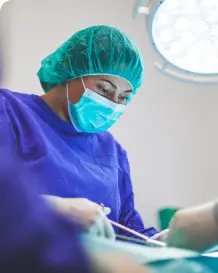Treatment for otosclerosis aims to improve hearing and reduce the symptoms. The choice of treatment is determined by the severity of the condition and the specific needs of each patient. Therapeutic options include:
1. Observation: Milder cases of otosclerosis, may simply need to be monitored with regular hearing tests.
2. Hearing Aids: For many people with otosclerosis, amplifying sound with a hearing aid can help make up for hearing loss. This non-invasive option is for people who are not candidates for surgery or who prefer not to have surgery.
3. Surgery: Most people with otosclerosis regain their hearing through surgery. The most common procedure is called a stapedectomy. During a stapedectomy, part or all of the immobilized stapes bone is removed and replaced with a prosthetic device, such as a wire, a loop, or a spring. Removing the immobilized bone and replacing it with a prosthetic device restores the movement of the bones in the middle ear, and this should improve or restore hearing. During a similar surgery called a stapedotomy, a tiny hole is made in the stapes and a prosthesis is inserted. The success rate for both of these surgeries is very high. Of course, all surgeries come with risks that should be considered and discussed with an otolaryngologist.
4. Sodium Fluoride Therapy: Various studies have suggested that supplemental Sodium Fluoride can slow otosclerotic progression, especially the sensorineural hearing loss component. This treatment might originate its beneficial effects by inducing the strengthening of otospongiotic bone or damping down active otosclerotic foci. The efficacy of treatment with Sodium Fluoride has been controversial, and it has not become universally accepted in practice.
5. Bone-Anchored Hearing Aids (BAHA): This option is for people with substantial mixed hearing loss for whom regular hearing aids are not effective or appropriate. A BAHA is a surgically implanted device that sends sound vibrations directly to the inner ear through the skull bone.
6. Cochlear Implants: These electric devices are generally reserved for use in patients with severe to profound sensorineural hearing loss in both ears who do not benefit enough from hearing aids.
 50+
50+







